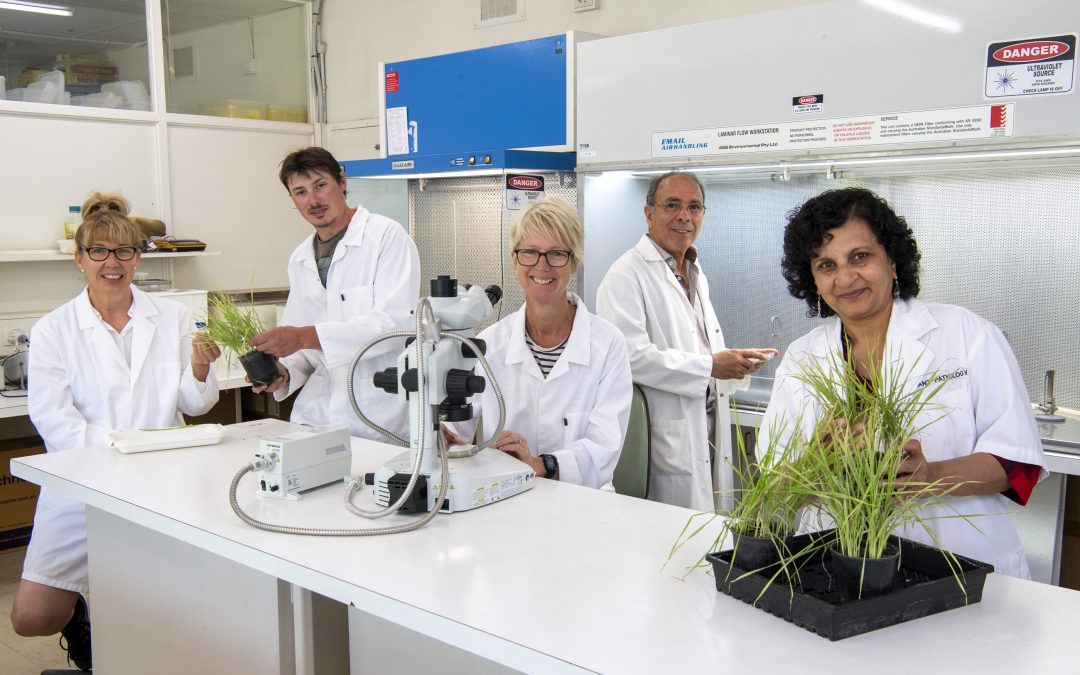PHOTO: The “Primary Industries Development Research Highlights 2021” showcases the breadth of research and development activity across WA, including disease resistance research carried out in its labs.
In a celebration of Science Week 2021, the WA Department of Primary Industries has released its ‘Primary Industries Development Research Highlights 2021’, to share its work and outcomes from about 60 of more than 140 recently completed and current research projects.
Please click on the following link for just published DPIRD Research Highlights, which is available at agric.wa.gov.au : Primary Industries Development Research Highlights 2021
16 August 2021 WA Department of Primary Industries and Regional Development (DPIRD)
Media Release presented below:
WA Department of Primary Industries and Regional Development (DPIRD) 16 August 2021
Publication Highlights Department’s Research and Development,
The Department of Primary Industries and Regional Development (DPIRD) has showcased its breadth of research and development activity across the State’s agriculture and aquaculture industries in a comprehensive new publication. In a celebration of Science Week, the department has released its ‘Primary Industries Development Research Highlights 2021’, to share its work and outcomes from about 60 of more than 140 recently completed and current research projects.
The projects, carried out by about 1100 DPIRD scientists, technical experts and economists, contribute to the ongoing success of WA’s primary industries.
Primary Industries Development Deputy Director General Carl Binning said the publication harnessed the department’s scientific expertise and achievements across the sector. “DPIRD is focussed on helping to advance WA’s vital primary industries through targeted research and development,” Mr Binning said. “The sector contributes more than $10 billion in value to the State’s economy each year, while creating about 156 thousand direct and indirect jobs. We are investing in research and digital infrastructure across the regions while building scientific, industry and export capacity and safeguarding the state’s agricultural industry – its valuable soil, water and land resources. We are supporting primary industries to maintain and improve their productivity in the face of a drying climate drive by climate change. We have refurbished and built new agricultural and fisheries research and development facilities from the Kimberley and Pilbara regions through to Albany on WA’s South Coast and Merredin in the eastern wheatbelt. These facilities are being used for an impressive and broad array of activities, from developing the State’s shellfish and marine finfish industries, through to addressing soil constraints in cropping, advancing the genetics of the WA sheep flock, breeding export-quality horticultural and agricultural crops and pastures and investigating ways to reduce the carbon footprint of the sector.”
Mr Binning said the department was committed to reinvigorating research and development in WA’s primary industries and improving commercial outcomes, industry performance and economic growth. “As science and new technologies evolve, so too do opportunities for sustainable, profitable agricultural developments,” he said. “We are working towards creating a robust research ecosystem to maximise the benefit of our R&D for WA through our collaboration with independent agronomists, grower groups, specialist scientists at universities and the CSIRO.”


Recent Comments